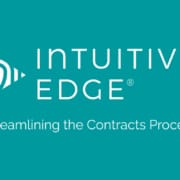Streamlining with Automated Approvals in Procurement Transition: The ALSP Edge
In the intricate dance of procurement transition during M&A activities, the timing and efficiency of approvals set the pace for success. Traditional approval methods, while familiar, can introduce unwelcome delays, muddled communication, and inconsistent results. The rise of Alternative Legal Service Providers (ALSPs) introduces a promising solution: advanced, automated approvals. Here’s how ALSPs are revolutionizing the approval process with automation tailored for the complexities of M&A.
1. ALSPs’ Ready-made Solution
What sets ALSPs apart in the M&A arena is their arsenal of tools developed from diverse deal experiences:
- Proven Efficiency: Having been refined over multiple transitions, their automated approval systems are both tried and tested.
- Swift Implementation: ALSPs offer plug-and-play solutions, reducing the lead time for setting up efficient approval mechanisms.
2. Speed and Efficiency
Time is always at a premium in M&A transitions. Automated approvals by ALSPs:
- Accelerate Processes: Bypass the lag time associated with traditional review mechanisms.
- Limit Human Dependency: Pre-set decision criteria facilitate quicker decisions without compromising integrity.
3. Uniformity and Precision
ALSPs ensure that automation does not sacrifice quality:
- Consistent Decision-Making: The system is designed to ensure every decision meets the same standard.
- Minimized Errors: The possibility of oversights is substantially reduced, ensuring accurate outcomes.
4. Real-time Oversight
Integration with real-time dashboards enables:
- Instantaneous Monitoring: Track the status of contracts in real time.
- Proactive Action: Pinpoint and rectify bottlenecks immediately.
5. Enhanced Accountability
ALSP-driven automation enhances transparency:
- Transparent Audit Trails: Every approval, modification, and intervention is logged systematically.
- Defined Responsibility: The decision-making process becomes crystal clear, ensuring stakeholders are always in the loop.
6. Economical and Efficient
The cost-benefit of using an ALSP’s automated system is substantial:
- Optimized Resource Allocation: Manual processes are minimized, allowing for resources to be channeled more effectively.
- Mitigated Delays: The efficiency of a seasoned system translates to financial savings through timely project completions.
7. Seamless Integration
ALSPs’ approval systems are built for adaptability:
- Unified Communication: Direct notifications about approval statuses keep everyone aligned.
- Data-Driven Strategy: Insights from previous deals feed into the system, ensuring continuous refinement.
Conclusion
M&A activities, with their inherent complexities, demand innovative solutions to age-old challenges. The ALSPs, with their rich history of engagements and tech-driven approach, have tailored automation to address these very challenges. As the M&A landscape continues to evolve, leveraging the expertise and tools of ALSPs will become indispensable for those aiming for streamlined, successful transitions.




